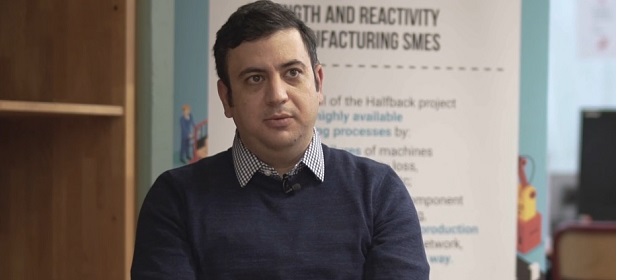Ahmed SAMET, enseignant chercheur dans l'équipe ICube SDC (Science des données et connaissances), soutient son HDR (Habilitation à diriger des recherches) le 23 novembre 2023, à 9h, dans l'amphithéâtre Art et Industrie de l'INSA Strasbourg.
La soutenance sera en anglais et aura pour sujet Data Mining Driven Approaches for Predictive Maintenance, Inventive Design Modelling and Energy Storage Systems. Elle sera aussi accessible en direct via ce lien.
Le jury est composé ainsi :
Garant :
- Romuald Boné, professeur, INSA Strasbourg
Rapporteurs :
- Robert J. Howlett, professeur, directeur de KES International Research
- Salem Benfarhat, professeur, Université d’Artois
- Bruno Cremeilleux, professeur, Université de Caen Normandie
Examinateurs :
- Hubert Cardot, professeur, Ecole Polytechnique de l’Université de Tours
- Pierre Gançarski, professeur, Université de Strasbourg
- Osmar R. Zaiane, professeur, University of Alberta
- Claudia Hentschel, professeur, HTW Berlin, University of Applied Sciences
- Denis Cavallucci, professeur, INSA Strasbourg
Summary
In this thesis, we focus on three distinct applications based on data mining and machine learning, which are: (i) predictive maintenance, (ii)inventive design modelling and (iii) energy efficiency. In these three applications, we investigate the use of data mining techniques for industry 4.0. Indeed, data mining is a well known sub-discipline of machine learning (ML) that aims to extract knowledge from large volume of data and find knowledge when human are incapable to do so.
A first interaction is explored between data mining and predictive maintenance. In this topic, we investigate the use of pattern mining for explaining the failure happening in production lines.
In the context of predictive maintenance in smart factories, pattern mining has been widely used to discover frequently occurring temporally-constrained patterns, through which warning signals can be sent to humans for a timely intervention (Dousson and Duong, 1999a). Among pattern mining techniques, chronicle mining has been applied to industrial data sets for extracting temporal information of events (Cram, Mathern, and Mille, 2012). The extracted temporal information is valuable for predicting potential machinery failures that may appear in the future (Cram, Mathern, and Mille, 2012). However, even though chronicle mining results are expressive and interpretable representations of complex temporal information, domain
knowledge is required for users to have a comprehensive understanding of the mined chronicles (Pei, Han, and Wang, 2002).
A second interaction explores the interaction of text mining and TRIZ theory. The goal is to analyze patent documents to extract TRIZ contradiction. A contradiction is a domain-free formulation of a problem. When comparing problems from different fields, the problem that arises is the vocabulary used to describe the problems, which is fundamentally different for a problem in mechanics and a problem in chemistry. Thus, Altshuller (Altshuller, 1999)
introduced general parameters (called TRIZ parameters) which can apply to all domains to describe problems (Weight of Stationary Objects, Speed, Power, Waste of Energy…). A contradiction from TRIZ domain is seen as a parameter improvement which leads to another parameter degradation and compromising between these two parameters is not the appropriate
path to invent. One should find a solution that both improve the first parameter while also improving the second. The matrix gathers the inventive principles (i.e. the inventive paths to follow) that statistically have the best chance of success on every possible contradiction between TRIZ parameters. The idea, in this thesis, is to mine and find patents sharing the same
contradiction.
A third interaction consists in analyzing Lithium-ion batteries in order to predict the Remaining Useful Life (RUL). The goal is in line with the topic of energy efficiency in industry 4.0. Indeed, we assume that when the RUL is predictable, the user could be notified and recommendation could be made to extend it. To do so, we focus on analyzing Lithium-ion batteries cells RUL using user usage data such as current, voltage and/or temperature. The problem is then assumed to be a regression problem using exogenous variables. To the best of our knowledge, the problem is not sufficiently investigated in literature. Therefore, we propose a two folded contributions. First, we aim using regressive neural networks model to predict the RUL using the usage data. In this part, we investigate, in particular, how to compress the data of the usage time series data. In the second step, we intend to make these black boxes more
explainable. We add a layer of SHAP model (Lundberg and Lee, 2017) on top of a predictive model to explain the relation between the predicted output and the inputs.



